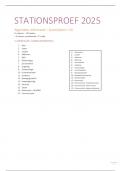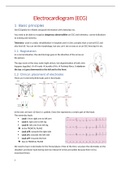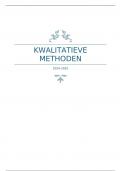Transportation policy
Transport policy
› Focused on ‘optimizing’ the transportation system
- Maximize the e ciency of travel
› Traditional approach to infrastructure planning
(Banister, 2005):
1.Deductive approach of data collection
2.Setting targets
3.Predict future demand
4.Expand existing transport network
Why do we need to unpack transport policy?
1. Transport is not a one-issue topic area, making it notoriously di cult, since we have to think
about the relationship between
1. Di erent modes of transport
2. Transport and the environment, the economy, public health, inclusion, etc.
Dimensions in transport policy (e.g. Schöller-Schwedes, 2010).
1. Technical: freight transport for example, is impacted by the transfer from the road onto rails,
which in turn is simpli ed through technical innovations. In the passenger services sector, the
combination of public and private transport is supported by electronic information systems (e.g.
MaaS).
2. Political: decisions in the transport policy a ect other political sectors and vice versa. See, for
example, the close interrelation of urban and transport developments
3. Social: development of transport a ects society as a whole and its various factions, each with
their speci c powers and interests are to take part in the decision making process.
Why do we need to unpack transport policy?
2. We need to re-understand what transport policy might be, given the fact that there have not
been transport policies for a long period of time:
“Trying to nd evidence of a coherent transport policy when examining the record of the rst
decade of the Labour government is rather like attempting to ring up a person whose obituary you
have just read in the newspaper. There may have been something approaching a policy once, but
there is precious little trace of it now” (Docherty and
Shaw, 2008, p. viii).
What is policy?
› Policy = “A high-level overall plan embracing the general goals and acceptable procedures
especially of a governmental body”
› Policy = “A de nitive course or method of action selected (by government, group or individual)
from among alternatives and in the light of given conditions to guide, and usually to determine
present and future decisions” (Webster Dictionary)
› Transport policy deals with the development of a set of constructs and propositions that are
established to achieve speci c objectives relating to social, economic, and environmental
conditions, and the functioning and performance of the transport system.
› Transport planning deals with the systematic and well-founded preparation and
implementation of actions designed to address speci c problems.
New deal for transport (1997):
› integration within and between di erent types of transport - so that each contributes its full
potential and people can move easily between them;
› integration with the environment - so that our transport choices support a better environment;
› integration with land use planning - at national, regional and local level, so that transport and
planning work together to support more sustainable travel choices and reduce the need to travel;
› integration with our policies for education, health and wealth creation - so that transport helps
to make a fairer, more inclusive society.
ff fi fiffi fi fi ffff ff fi ffi fi
, Policy ip- op: “Every time a new agenda starts to become more pressing than something else,
we forget where it was we were going, and start doing the things we should not do” (Marsden,
2012).
Current prominent policy objectives: › smart
› inclusive (i.e. fair, just, a ordable) › green
› safe
› sustainable
Two fundamental principles:
1.Travel is a derived demand and not an
activity that people wish to undertake for
its own sake. Travel has no value.
2.People minimise their generalised costs of
travel, mainly operationalised through a
combination of the costs of travel and the
time taken for travel.
These two underlying principles have
important consequences, as they are
embedded in most analysis and evaluation
studies
Hard policy measures
› The aim is to enforce change towards more
sustainable transport options, i.e. to increase “travel costs”
Examples include:
› Regulations, requiring compliance › Road tolls
› Congestion charges
› Increased fuel prices
› Technological innovations
These are measures that aim to in uence the ‘objective environment’ of travelers, in particular, the
choice between:
› Alternative travel modes;
› Alternative route options
› Alternative destinations
Travel costs can be expressed in terms of (cf. impedance, disutility, enable in the de nition of
accessibility):
› Price
› Comfort
› Speed (time)
Previous research has shown that:
› hard policy measures alone do not lead to reduced car use (Stopher, 2004)
› Hard policy measures that enforce change have often resulted, moreover, in reluctance on the
part of the general public and thus often politically unfeasible (Gärling & Schuitema, 2007; Jones,
2003)
Behavioral policy instruments.
› Aim is to motivate and empower car users to voluntarily switch to more sustainable travel
Examples include
› Workplace travel plans (encouraging work commuters not to use the car)
› school travel plans (encouraging parents not to drive their children to school)
› personalized travel planning (encouraging reduced car use for all trip purposes),
› marketing of public transport (mass advertising campaigns),
› travel awareness campaigns (increasing awareness of problems resulting from car use)
fl fl ff fl fi
, Soft policy instruments work on the assumption that :
› these alter the perceptions of the objective environment,
› these alter judgements of the consequences associated with the use of di erent travel options,
› travelers can be motivated and empowered to switch to alternative travel options.
self-e cacy - i.e. the trust in one’s own ability related to a speci c task, that is, travel behavior
change;
social support - the experiences of support and guidance of family, friends, colleagues, and
employers;
satisfaction with travel - the level of satisfaction during travel
Policy instruments: Activities
Moser and Bamberg (2008) synthesized the results of 141 studies evaluating the car-use
reduction e ects of:
› workplace travel plans (44 studies),
› school travel plans (25 studies),
› travel awareness campaigns/marketing of public transport (72 studies).
Across all 141 studies:
› a signi cant standardized mean e ect size of 0.15
(Cohen’s h) was found,
› corresponding to an 11% decrease in the proportion of trips conducted by car (from 61% to
54%)
Fujii et al. (2009) evaluated studies of:
› 15 Japanese “travel feedback programs”. Across these studies:
› A standardized mean e ect size of 0.17 (Cohen’s d) was found.
› This corresponds to a decrease in the average number of weekly car trips from 6.9 to 5.7.
Policy instruments: Land use
› Also discussed as spatial (design) instruments
› Aim to optimize the spatial distribution of people and their activities through
- minimizing the distance
- mix between residential places and work places, services and shops
Examples include
› Spatial planning
› Improving quality of shopping and leisure facilities
› Parking policies
Spatial (design) instruments work on the assumption that:
› Urban form and density of settlements a ect transport distances and number of trips within a
city, between neighborhoods, home and work, and home and services like city centers and
shopping areas.
› Especially commuting distances will be a ected by spatial planning as this in uences location
choices by rms and households.
› Getting people, organizations and activities in close proximity increases the number of possible
destinations that can be reached within the same range of distance
Simulations show that:
› “a household would be expected to drive roughly 32% fewer miles if its distance from
downtown decreased by 50% (e.g., if it moved from 10 miles to 5 miles from downtown)”.
At the same time, however:
› Increasing the density of an existing metropolitan area requires extreme investments in new
and in ll development;
› Even in cities that are successful at increasing density by 40%, we would only expect driving to
decrease by roughly 9%.
ffifi fi fffi ff ff ffff fi ff fl
Transport policy
› Focused on ‘optimizing’ the transportation system
- Maximize the e ciency of travel
› Traditional approach to infrastructure planning
(Banister, 2005):
1.Deductive approach of data collection
2.Setting targets
3.Predict future demand
4.Expand existing transport network
Why do we need to unpack transport policy?
1. Transport is not a one-issue topic area, making it notoriously di cult, since we have to think
about the relationship between
1. Di erent modes of transport
2. Transport and the environment, the economy, public health, inclusion, etc.
Dimensions in transport policy (e.g. Schöller-Schwedes, 2010).
1. Technical: freight transport for example, is impacted by the transfer from the road onto rails,
which in turn is simpli ed through technical innovations. In the passenger services sector, the
combination of public and private transport is supported by electronic information systems (e.g.
MaaS).
2. Political: decisions in the transport policy a ect other political sectors and vice versa. See, for
example, the close interrelation of urban and transport developments
3. Social: development of transport a ects society as a whole and its various factions, each with
their speci c powers and interests are to take part in the decision making process.
Why do we need to unpack transport policy?
2. We need to re-understand what transport policy might be, given the fact that there have not
been transport policies for a long period of time:
“Trying to nd evidence of a coherent transport policy when examining the record of the rst
decade of the Labour government is rather like attempting to ring up a person whose obituary you
have just read in the newspaper. There may have been something approaching a policy once, but
there is precious little trace of it now” (Docherty and
Shaw, 2008, p. viii).
What is policy?
› Policy = “A high-level overall plan embracing the general goals and acceptable procedures
especially of a governmental body”
› Policy = “A de nitive course or method of action selected (by government, group or individual)
from among alternatives and in the light of given conditions to guide, and usually to determine
present and future decisions” (Webster Dictionary)
› Transport policy deals with the development of a set of constructs and propositions that are
established to achieve speci c objectives relating to social, economic, and environmental
conditions, and the functioning and performance of the transport system.
› Transport planning deals with the systematic and well-founded preparation and
implementation of actions designed to address speci c problems.
New deal for transport (1997):
› integration within and between di erent types of transport - so that each contributes its full
potential and people can move easily between them;
› integration with the environment - so that our transport choices support a better environment;
› integration with land use planning - at national, regional and local level, so that transport and
planning work together to support more sustainable travel choices and reduce the need to travel;
› integration with our policies for education, health and wealth creation - so that transport helps
to make a fairer, more inclusive society.
ff fi fiffi fi fi ffff ff fi ffi fi
, Policy ip- op: “Every time a new agenda starts to become more pressing than something else,
we forget where it was we were going, and start doing the things we should not do” (Marsden,
2012).
Current prominent policy objectives: › smart
› inclusive (i.e. fair, just, a ordable) › green
› safe
› sustainable
Two fundamental principles:
1.Travel is a derived demand and not an
activity that people wish to undertake for
its own sake. Travel has no value.
2.People minimise their generalised costs of
travel, mainly operationalised through a
combination of the costs of travel and the
time taken for travel.
These two underlying principles have
important consequences, as they are
embedded in most analysis and evaluation
studies
Hard policy measures
› The aim is to enforce change towards more
sustainable transport options, i.e. to increase “travel costs”
Examples include:
› Regulations, requiring compliance › Road tolls
› Congestion charges
› Increased fuel prices
› Technological innovations
These are measures that aim to in uence the ‘objective environment’ of travelers, in particular, the
choice between:
› Alternative travel modes;
› Alternative route options
› Alternative destinations
Travel costs can be expressed in terms of (cf. impedance, disutility, enable in the de nition of
accessibility):
› Price
› Comfort
› Speed (time)
Previous research has shown that:
› hard policy measures alone do not lead to reduced car use (Stopher, 2004)
› Hard policy measures that enforce change have often resulted, moreover, in reluctance on the
part of the general public and thus often politically unfeasible (Gärling & Schuitema, 2007; Jones,
2003)
Behavioral policy instruments.
› Aim is to motivate and empower car users to voluntarily switch to more sustainable travel
Examples include
› Workplace travel plans (encouraging work commuters not to use the car)
› school travel plans (encouraging parents not to drive their children to school)
› personalized travel planning (encouraging reduced car use for all trip purposes),
› marketing of public transport (mass advertising campaigns),
› travel awareness campaigns (increasing awareness of problems resulting from car use)
fl fl ff fl fi
, Soft policy instruments work on the assumption that :
› these alter the perceptions of the objective environment,
› these alter judgements of the consequences associated with the use of di erent travel options,
› travelers can be motivated and empowered to switch to alternative travel options.
self-e cacy - i.e. the trust in one’s own ability related to a speci c task, that is, travel behavior
change;
social support - the experiences of support and guidance of family, friends, colleagues, and
employers;
satisfaction with travel - the level of satisfaction during travel
Policy instruments: Activities
Moser and Bamberg (2008) synthesized the results of 141 studies evaluating the car-use
reduction e ects of:
› workplace travel plans (44 studies),
› school travel plans (25 studies),
› travel awareness campaigns/marketing of public transport (72 studies).
Across all 141 studies:
› a signi cant standardized mean e ect size of 0.15
(Cohen’s h) was found,
› corresponding to an 11% decrease in the proportion of trips conducted by car (from 61% to
54%)
Fujii et al. (2009) evaluated studies of:
› 15 Japanese “travel feedback programs”. Across these studies:
› A standardized mean e ect size of 0.17 (Cohen’s d) was found.
› This corresponds to a decrease in the average number of weekly car trips from 6.9 to 5.7.
Policy instruments: Land use
› Also discussed as spatial (design) instruments
› Aim to optimize the spatial distribution of people and their activities through
- minimizing the distance
- mix between residential places and work places, services and shops
Examples include
› Spatial planning
› Improving quality of shopping and leisure facilities
› Parking policies
Spatial (design) instruments work on the assumption that:
› Urban form and density of settlements a ect transport distances and number of trips within a
city, between neighborhoods, home and work, and home and services like city centers and
shopping areas.
› Especially commuting distances will be a ected by spatial planning as this in uences location
choices by rms and households.
› Getting people, organizations and activities in close proximity increases the number of possible
destinations that can be reached within the same range of distance
Simulations show that:
› “a household would be expected to drive roughly 32% fewer miles if its distance from
downtown decreased by 50% (e.g., if it moved from 10 miles to 5 miles from downtown)”.
At the same time, however:
› Increasing the density of an existing metropolitan area requires extreme investments in new
and in ll development;
› Even in cities that are successful at increasing density by 40%, we would only expect driving to
decrease by roughly 9%.
ffifi fi fffi ff ff ffff fi ff fl






